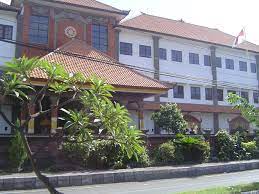SEJARAH
Program Studi Teknik Mesin merupakan salah satu Program Studi di Fakultas Teknik Universitas Udayana yang latar belakang pendiriannya didasarkan pada upaya antisipasi pada perkembangan pesat di bidang teknik Mesin. Upaya awal pendirian Program Studi Teknik Mesin adalah berdasarkan Surat Keputusan Rektor Nomor : 2950/PT.17/1.01.02/1984. Setelah melalui tahap perjuangan selama 4 tahun maka pada tahun 1988 turun Surat Keputusan Direktur Jendral Pendidikan Tinggi Nomor : 64/DIKTI/Kep/88 tentang status resmi Program Studi Teknik Mesin. Pada tahun 1997 mendirikan program Nonreguler dengan Surat Keputusan Direktur Jendral Pendidikan Tinggi Nomor : 355/DIKTI/KEP/1997. Terakreditasi ”A” sejak 29 September 2011 sampai dengan 29 September 2016. Bidang konsentrasi yang dimiliki adalah Konversi Energi dan Rekayasa Manufaktur.
LAB
- LAB METALURGI DAN MATERIAL
- LAB PERPINDAHAN PANAS
- LAB MESIN FLUIDA
- LAB REFRIGERASI
- LAB PEMBAKARAN DAN MOTOR BAKAR
- LAB ANALISA BAHAN
- LAB PRODUKSI DAN MANUFAKTUR
- LAB DESAIN DAN TRIBOLOGI
- LAB SOUND DAN VIBRATION
- LAB FENOMENA
- LAB FISIKA
PROGRAM STUDI
Visi
Menyelenggarakan pendidikan teknik mesin yang bermutu tinggi.
Menciptakan suasana yang kondusif dalam aktivitas riset maupun pendidikan.
Menjalin hubungan dan kerjasama yang harmonis dengan pihak luar guna pengembangan keahlian dan keilmuan.
1. Awarding Body/Institution |
Udayana University |
|
2. Teaching institution |
Bachelor of Mechanical Engineering, Faculty of Eng. Address: Bukit Jimbaran Campus, Badung, Bali Indonesia Contact: Ph. +62 361 703321 Website: https://mesin.unud.ac.id Email : mesin@unud.ac.id |
|
3. Accreditation body rating |
1. “A” by BAN-PT (National Accreditation Board for Higher Education), 2016 2. “Provisional Accreditation” by IABEE, 2019 |
|
4. Name of the final award |
S.T. (Sarjana Teknik, Bachelor of Engineering) |
|
5. Name of Program |
Bachelor of Mechanical Engineering |
|
6. Language of instruction |
Indonesian |
|
7. Mode of study |
Blended learning: Conventional face-to-face, online meeting, and using LMS |
|
8. Mode of operation |
Public university |
|
9. Study scheme |
Full time |
|
10. Study duration |
Min 4 years (8 semesters); Max 7 years (14 semesters) |
|
11. Admission criteria |
1. Senior high school graduates 2. Passing the new student admission procedures |
|
12. BME Objectives |
1. To produce graduates with broad insight with competent mastery of mechanical engineering with awareness to the local needs; 2. To produce creative and innovative graduates in related to knowledge and technology; 3. To increase the quantity and quality of the research; 4. To apply and disseminate knowledge and technology as well as the research results to the community. |
|
13. Graduate Profiles |
Mech. engineering system design, problem solving and improvement, managerial & leadership, researcher, entrepreneur |
|
14. Expected Learning Outcomes (keywords) |
Professional ethics, eexcellence & competitiveness, Ccultural awareness, Llifelong learning, Engineering Knowledge, Ccommunication & team working, Engineering Design, Science-Engineering application, Engineering-problem solving, Experiment and research, Problem solving and sustainability, Management and entrepreneurship |
|
15. Program Structure |
The MESP course structure consisted of minimum 144 credits for 4 to 7 years length of study. The course subjects cover 5 groups i.e., mathematics and natural science, engineering science and technology, information and communication, engineering design and problem-based experiment, and general education (moral, ethics, social-culture, environment, and management, respectively. The field of specialization related to the final project are Energy Conversion and Manufacturing Engineering. |

 MASUK PTN
MASUK PTN